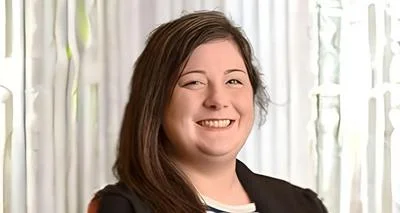Children's Hospital of Illinois Bloomington issued the following announcement on Apr. 29.
When COVID-19 was officially declared a global pandemic last March, building closures and event cancellations began in an effort to stop the spread of COVID-19. This included sporting events, concerts, holiday celebrations, birthday parties, weddings, graduations, in-person school, and much more. For many, this also included the closure of office buildings. Employers around the globe adjusted to a new “work from home” world that took many employees time to adjust to – one that eventually became our “new normal.”
Now, more than a year later and with the development of safe and effective vaccines, organizations are starting the “return to work” process and beginning to open up office buildings, which means many people across the country are packing up their home office in preparation to head back to a familiar – or not so familiar – work environment.
“People are having a hard time transitioning. Some people do get set in their place being at home and have that difficult time, teetering from anxious about being home all the time and then anxious about going back in the work place and being around people they haven’t been around for a year now,” says Ashley Lisek, an OSF HealthCare family medicine APN.
With more than 200 million vaccine doses given in the U.S. – and counting – and end to this pandemic now seems possible. However, we aren’t out of the woods yet, and the fear of COVID-19 is still very real.
Over the last year, many Americans have not ventured outside of their homes other than for essential errands – and the thought of returning to work is causing a spike in anxiety. In fact, at-home office spaces became the “DIY” project of 2020 and people have grown accustom to their safe space in the comfort of their own homes. So how can you prepare for returning to your pre-pandemic work space?
“My number one advice to getting back into it is maybe start doing your routines now the best you can. Start laying out how you would incorporate those routines because the people who have been doing this for the last year have been very set in their ways about what they are doing – so it may help by getting back into that role,” advises Lisek.
She continues, “Maybe a week out, start waking up at the same time and do your normal routine and try to get out of the house for more extended periods of time. Try to ease yourself into getting into environments that you haven’t been in for so long, which may help put you at ease a little.”
Additionally, take short breaks in your day to get some fresh air outside, go for a brisk walk, and make sure you are getting the proper nutrients, drinking plenty of water, and getting a sleep schedule in place in order to stay healthy as you get back into the swing of things. Most importantly, Lisek reminds us that the safety measures currently in place to protect us from COVID-19 need to remain in effect in the workplace.
“In order to really bring down the numbers of COVID and slow the spread, we do need to continue to maintain social distancing and masking. So although you may have received the vaccine, or people you know have, it is very important to still keep your masks on and social distance when we can,” Lisek says.
If after returning to the office your anxiety is still high and you are not able to adjust, Lisek recommends talking to someone you trust about how you are feeling, or perhaps seeing professional help.
“If you get to a point where this is happening more frequently and you feel like it is something that is impacting your day to where you physically cannot go about your day to day life, I recommend trying to seek help – whether that be your primary care or an emergency room setting,” advises Lisek.
If you or a loved one is experiencing mental health struggles caused by the pandemic, OSF HealthCare offers free behavioral health navigation services to help understand all resources available in your area. OSF Silver Cloud is also available. The free mental health digital support tool is available in communities served by OSF.
Original source can be found here.

Source: Children's Hospital of Illinois Bloomington






 Alerts Sign-up
Alerts Sign-up